On this page
AlbatrossThis page lists books that are totally or partially about Albatrosses. The books are listed by publication date with the most recent at the top.
Albatross species
The taxonomy of the Albatross is uncertain. Some authorities recognise 22 species:
Waved Albatross
Phoebastria irrorata
Short-tailed Albatross
Phoebastria albatrus
Black-footed Albatross
Phoebastria nigripes
Laysan Albatross
Phoebastria immutabilis
Wandering Albatross
Diomedea exulans
Antipodean Albatross
Diomedea antipodensis
Amsterdam Albatross
Diomedea amsterdamensis
Tristan Albatross
Diomedea dabbenena
Northern Royal Albatross
Diomedea sanfordi
Southern Royal Albatross
Diomedea epomophora
Sooty Albatross
Phoebetria fusca
Light-mantled Albatross
Phoebetria palpebrata
Black-browed Albatross
Thalassarche melanophrys
Campbell Albatross
Thalassarche impavida
Shy Albatross
Thalassarche cauta
White-capped Albatross
Thalassarche steadi
Chatham Albatross
Thalassarche eremita
Salvin's Albatross
Thalassarche salvini
Grey-headed Albatross
Thalassarche chrysostoma
Atlantic Yellow-nosed Albatross
Thalassarche chlororhynchos
Indian Yellow-nosed Albatross
Thalassarche carteri
Buller's Albatross
Thalassarche bulleri
|
|
|
|
Multimedia Identification Guide to North Atlantic Seabirds: Albatrosses and Fulmarine PetrelsBob Flood and Ashley Fisher
Illustrations: John Gale
Scilly Pelagics
2016
270 plus page book with 200 photographs, 180 illustrations and colour range maps. Also 2 DVDs with 120 minutes of at sea, at colony and in-hand footage. Species covered: Atlantic Yellow-nosed Albatross, Indian Yellow-nosed Albatross, Grey-headed Albatross, Black-browed Albatross, Shy Albatross, Tristan Albatross, Southern Giant Petrel, Northern Giant Petrel, Atlantic Fulmar, Pacific Fulmar, and Cape Petrel
|
Buy from amazon.co.uk 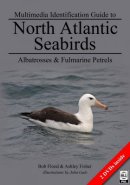
|
|
Holy Moli: Albatross and Other AncestorsHob Osterlund
Oregon State University Press
2016
"Hob Osterlund moved to Hawai'i after being visited in a dream by an ancestor, Martha Beckwith, author of the monumental classic, Hawaiian Mythology. It was there, on the island of Kaua'i, where she happened upon a few courting albatross and felt an inexplicable attraction to the birds an attraction too powerful to be explained by their beguiling airbrushed eye shadows, enormous wingspans, and rollicking dances. In Hawaiian mythology, ancestors may occupy the physical forms of animals known as 'aumakua. Laysan albatross known as moli are among them. Smitten with these charismatic creatures, Osterlund set out to learn everything she could about moli. She eventually came to embrace them as her 'aumakua not as dusty old myths on a museum bookshelf, but as breathing, breeding, boisterous realities.....Holy Moli is a natural history of the albatross, a moving memoir of grief, and a soaring tribute to ancestors. Within its pages are lyrics of wonder for freedom, for beauty, and for the far-flung feathered creatures known to us as "albatross"
|
Buy from amazon.co.uk 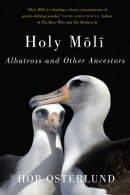
|
|
AlbatrossGraham Barwell
Animal series
Reaktion Books
2013
224 pages, 60 colour illustrations, 40 other illustrations
"Albatross looks at the place of these iconic birds in a wide variety of human cultures, from early responses by north Atlantic mariners to modern encounters, examining in detail the role the bird plays in the lives of different peoples and societies. The albatross's remarkable ease in the air and its huge wingspan strikes all those who observe them, and the huge journeys they undertake across the oceans inspires awe. The bird has been celebrated through proverbs, folk stories, art, and ceremony. For many, the bird's cultural significance is still determined by Coleridge's 'The Rime of the Ancient Mariner'. People have engaged with the bird over the last two centuries, from those who sought to exploit them to those who devoted their lives to them. Writers, artists and documentary makers have all focused on the albatross and its place in the human imagination has been demonstrated throughout history. Albatross concludes with a consideration of the bird's changing significance in the modern world, as well as threats to its continued existence and its prospects for the future."
|
Buy from amazon.co.uk 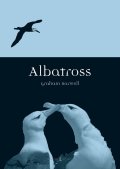
|
|
Petrels, Albatrosses, and Storm-Petrels of North America: A Photographic GuideSteve N. G. Howell
Princeton University Press
2012
"Petrels, albatrosses, and storm-petrels are among the most beautiful yet least known of all the world's birds, living their lives at sea far from the sight of most people. Largely colored in shades of gray, black, and white, these enigmatic and fast-flying seabirds can be hard to differentiate, particularly from a moving boat. Useful worldwide, not just in North America, this photographic guide is based on unrivaled field experience and combines insightful text and hundreds of full-color images to help you identify these remarkable birds. The first book of its kind, this guide features an introduction that explains ocean habitats and the latest developments in taxonomy. Detailed species accounts describe key identification features such as flight manner, plumage variation related to age and molt, seasonal occurrence patterns, and migration routes. Species accounts are arranged into groups helpful for field identification, and an overview of unique identification challenges is provided for each group. The guide also includes distribution maps for regularly occurring species as well as a bibliography, glossary, and appendixes."
|
Buy from amazon.co.uk 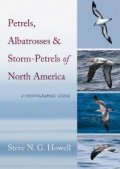
|
|
Troubled Waters: Trailing the Albatross: An Artist's JourneyBruce Pearson
Langford Press
2012
"After living and working among an abundance of albatrosses thirty five years ago on a remote island in the Southern Ocean, Bruce Pearson returned recently to see what had happened to some of the birds he had known so well. Troubled Waters offers insights into our understanding of the seabird's lives and the ocean environment, and inspires new engagement and identification with an extraordinarily urgent conservation crisis."
|
Buy from amazon.co.uk 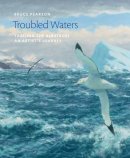
|
|
The Albatross and the Fish: Linked Lives in the Open SeasRobin W Doughty and Virginia Carmichael
University of Texas Press
2011
"Breeding on remote ocean islands and spending much of its life foraging for food across vast stretches of seemingly empty seas, the albatross remains a legend for most people. And yet, humans are threatening the albatross family to such an extent that it is currently the most threatened bird group in the world. In this extensively researched, highly readable book, Robin W. Doughty and Virginia Carmichael sound an alarm over the potentially catastrophic extinction process that has gone largely unremarked by governments and fishing interests around the globe. Doughty and Carmichael authoritatively establish that the albatross's fate is linked to the fate of two of the highest-value table fish, Bluefin Tuna and Patagonian Toothfish, which are threatened by unregulated commercial harvesting. The authors tell us that commercial fishing techniques are annually killing tens of thousands of albatrosses. And the authors explain how the breeding biology of albatrosses makes them unable to replenish their numbers at the rate they are being depleted. Doughty and Carmichael set the albatross's fate in the larger context of threats facing the ocean commons, ranging from industrial overfishing to our habit of dumping chemicals, solid waste, and plastic trash into the open seas. They also highlight the efforts of dedicated individuals, environmental groups, fishery management bodies, and governments who are working for seabird and fish conservation and demonstrate that these efforts can lead to sustainable solutions for the iconic seabirds and the entire ocean ecosystem."
|
Buy from amazon.co.uk 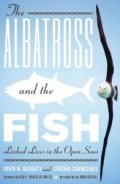
|
|
Seabird Genius: The Story of L.E. Richdale, the Royal Albatross, and the Yellow-eyed PenguinNeville Peat
Otago University Press
2011
"The first biography of Lance Richdale, who achieved international fame as the father of Otago's albatross colony from 1936 and for his research on the behaviour of the Yellow-eyed Penguin and the sooty shearwater, or muttonbird. Richdale grew up in Wanganui, took a tertiary course in agriculture in New South Wales, and returned to New Zealand to teach mainly in rural schools in the North Island for several years, eventually taking up a position with the Otago Education Board in 1928 as an inspiring itinerant agricultural instructor and nature study teacher. Richdale never gave up his day job and incredibly in the weekends, holidays and evenings undertook major, meticulous and time-consuming research on penguins, albatrosses and several petrel species. His study of the muttonbird was achieved during prolonged solo camps on tiny Whero Island in stormy Foveaux Strait, where the wind blew straight from Antarctica. Neville Peat's biography searches the traces left by this shy and obsessed man for some answers to two questions: why? and what drove him?."
|
Buy from amazon.co.uk 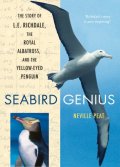
|
|
AlbatrossTony Martin
Colin Baxter Photography
2009
"The albatross captivates human imaginations in a way that few other birds do. Perhaps its their elegant mastery of the air over vast oceans, for albatrosses have the largest wingspan of any bird on the planet, reaching up to 11 feet. But they are also a cause for concern; 19 out of 22 species are under threat due to conflicts with commercial fishing. Urgent action is required if we are to save them from extinction."
|
Buy from amazon.co.uk 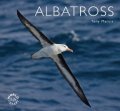
|
|
Albatrosses: Their World, Their WaysTui de Roy, Mark Jones and Julian Fitter
Christopher Helm
2008
"Albatrosses are highly threatened and in the public eye; they are the ultimate seabirds, living almost their entire lives at sea. The RSPB currently has a big campaign to help save them. This book is both an authoritative book covering all the world's species and a beautiful work of art to admire. It is illustrated with 300 breathtaking colour photographs from an award-winning photographer. The text comprises a series of essays by leading experts in the field and a systematic section that gives identification, behavioural and distributional information for each of the world's 22 species."
|
Buy from amazon.co.uk 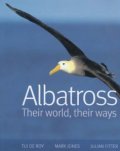
|
|
AlbatrossesTerence Lindsey
Australian Natural History Series
CSIRO
2008
"Albatrosses are largely confined to the region referred to by early mariners as the 'Roaring Forties' and the 'Furious Fifties', otherwise known as the Southern Ocean. The single most distinctive characteristic of the albatrosses is that they ride storms. Aside from a few close relatives among the petrels and shearwaters, they are the only animals (of any kind) that do this. They don't evade storms, or flee them, or grit their figurative teeth and hang on through them, they climb aboard and ride them - effectively throughout their lives. The meterology of the Southern Ocean is so extreme that the region might reasonably be viewed as essentially one enormous, endless storm.One with random patches and periods of relative calm, true - but broadly speaking an eternal torrent of high-velocity air that completely encircles Antarctica. For any non-aquatic animal, this characteristic makes the Southern Ocean nearly as inhospitable as the polar wastes or the most extreme of deserts. To all but the albatross, that is.This work outlines the life histories of these spectacular birds, and explores some of the main strategies and tactics that have evolved to enable them to achieve mastery of one of the most hostile regions on the planet."
|
Buy from amazon.co.uk 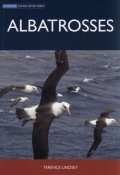
|
|
Albatrosses, Petrels and Shearwaters of the WorldDerek Onley and Paul Scofield
Princeton Field Guide
Princeton University Press
2007
"This is the first comprehensive field guide to the world's 136 species of albatrosses, petrels, shearwaters, storm petrels, and diving petrels. Because many of these birds spend most of their lives far from the coast, traveling from ocean to ocean in a constant search for food, they are poorly known, enigmatic, and often hard to identify in the field. This guide will make field identification much easier. It illustrates every species and shows the distinct plumages of each. It contains 46 high-quality color plates opposite concise descriptions and a color distribution map, with more complete species descriptions following. Species are illustrated on the same page as their confusion species, allowing direct comparisons for more accurate identifications. This field guide includes information on breeding, feeding, distribution, migration, and conservation. And it illustrates for the first time several extremely rare species, such as Beck's and MacGillivray's Petrels, and the New Zealand Storm-Petrel, which was rediscovered only in 2004."
|
Buy from amazon.co.uk 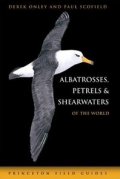
|
|
Albatrosses, Petrels and Shearwaters of the WorldDerek Onley
A Helm Field Guide
Christopher Helm
2006
"The first comprehensive guide to pelagic birds, the albatrosses, petrels, shearwaters, storm-petrels and diving petrels. A total of 46 spectacular colour plates highlight key ID criteria of the birds in flight, with close-ups of diagnostic regions of the plumage. The plates are accompanied by accurate distribution maps, while the sparkling text brings the world of these amazing birds to life. Several extremely rare species, such as Beck's Petrel, are illustrated for the first time, while the New Zealand Storm-petrel, rediscovered as recently as 2004, is also included."
|
Buy from amazon.co.uk 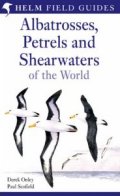
|
|
Albatrosses: Elusive Mariners Of The Southern OceanAleks Terauds, Fiona Stewart
New Holland Publishers
2005
"Elusive Mariners of the Southern Ocean tells the life histories of each of the five species of Albatross that breed in Australian waters, describes their breeding islands and outlines the efforts being made to preserve them. The book covers the history of human involvement in Bass Straight and the Southern Ocean the impact it has had on feral animals. Illustrated with the author's beautiful and intimate photographs of the birds, together with historic illustrations from publications such as Gould's The Birds of Australia and others created specifically for this book."
|
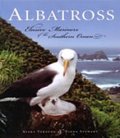 |
|
Albatrosses / AlbatrosEnrique Couve & Claudio F. Vidal
Fantastico Sur
2005
"The Albatrosses are long-lived birds, nest in remote oceanic islands and travel across the ocean, thousands of miles from their colonies to the feeding sites. This book is a fantastic photographic introduction to 12 species of these noble winged travelers which wander and breed across the southern seas. Species depicted include the Wandering Albatross, Gibson's Albatross, Antipodean Albatross, Northern Royal Albatross, Southern Royal Albatross, Shy (White-capped) Albatross, Salvin's Albatross, Chatham Albatross, Black-browed Albatross, Grey-headed Albatross, Buller's Albatross and Light-mantled Sooty Albatross. Species accounts included are distribution maps, descriptions, and notes on distribution, breeding and diet."
|
Buy from amazon.co.uk 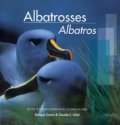
|
|
Albatrosses and Petrels Across the WorldMichael de L. Brooke
Colour plates: John Cox
Oxford University Press
2004
518 pages, 32pp colour plates, numerous halftones and maps
"Provides the most comprehensive and up-to-date species-level information available on this family of birds. Introductory general chapters cover the biology, feeding ecology, breeding behaviour, evolutionary relationships, and conservation of the birds in the family. These are followed by accounts of each of the 125 species of albatross and petrel, including weights and measurements, field characters, voice, habitat and food, breeding behaviour, life cycle, and range and status. The book includes 16 colour plates by John Cox showing adults of all species and many juveniles, immatures, and subspecies, plus integrated species distribution maps and black-and-white line figures."
|
Buy from amazon.co.uk 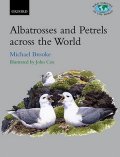
|
|
Seabirds: A Natural HistoryTony Gaston
Poyser
2004
"This title takes an in-depth look at the lives of the world's true seabirds - the penguins, tubenoses, peleceaniids, gulls, terns, skuas and auks. These birds all spend much of their lives foraging at sea, but the range of ways that they are adapted to exploit the marine environment and balance this with the need to return to land to breed, is astoundingly diverse. They range from the albatrosses, which take their prey from the surface of the water and are capable of efficient gliding flight for hours on end, to the penguins which have dispensed with flight altogether and have developed a morphology and physiology which enables them to dive deeper and for longer than any other birds. The various problems of being a bird which forages at sea, and the array of solutions evolution has produced to counter them are the theme of this book, which should fascinate everyone with an interest in pelagic birds."
|
Buy from amazon.co.uk 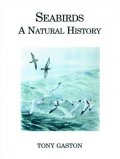
|
|
Eye of the Albatross: Visions of Hope and SurvivalCarl Safina
John MacRae Books
2003
"Eye of the Albatross takes us soaring to locales where whales, sea turtles, penguins, and shearwaters flourish in their own quotidian rhythms. Carl Safina's guide and inspiration is an albatross he calls Amelia, whose life and far-flung flights he describes in fascinating detail. Interwoven with recollections of whalers and famous explorers, Eye of the Albatross probes the unmistakable environmental impact of the encounters between man and marine life. Safina's perceptive and authoritative portrait results in a transforming ride to the ends of the Earth for the reader, as well as an eye-opening look at the health of our oceans."
|
Buy from amazon.co.uk 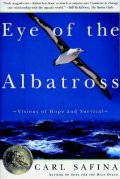
|
|
AlbatrossesW.L.N. Tickell
Pica Press
2000
"This is the first comparative account of the albatrosses based on a comprehensive review of their natural history, oceanography, island geography and recent scientific research. This book thoroughly explores all aspects of albatross biology, distribution and behaviour, as well as such topics as identification and taxonomy. Traditionally, the family has comprised 13 species in two genera, but more recently it has been proposed that 24 species in four genera should be recognised; most species inhabit the southern oceans. The author looks at each taxon, arranging them in various groups for convenience. The authoritative text is accompanied by numerous photographs, diagrams and maps."
|
Buy from amazon.co.uk 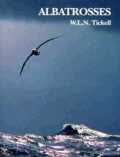
|
|
Albatross: Biology and ConservationEditor: Graham Robertson and Rosemary Gales
Surrey Beatty & Sons
1998
"23 chapters covering systematics and status, population studies, foraging and fisheries relationships, mortality due to fisheries and other factors, perspectives and reviews of albatross research and conservation."
|
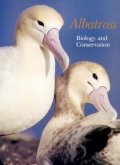 |
|
The World Of AlbatrossesChris Gaskin & Neville Peat
Photographs: Kim Westerskov
Hodder & Stoughton
1992
"Describes an extraordinary seabird's family, adaptations, prodigious powers of flight, life at sea and on land, and breeding cycle."
|
Buy from amazon.co.uk 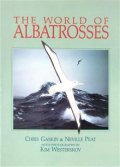
|
|
Southern Albatrosses and Petrels: An Identification Guide P.C. Harper and F.C. Kinsky
Victoria University Press
1978
"A field guide to the albatrosses and petrels likely to be found in the southern oceans from Tropic of Capricorn to Antarctica."
|
Buy from amazon.co.uk 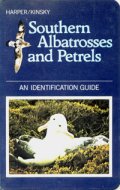
|
|
New Zealand Albatrosses & Petrels: An Identification GuidePeter C. Harper and F.C. Kinsky
The Biological Society, Victoria University of Wellington
1974
|
Buy from amazon.co.uk 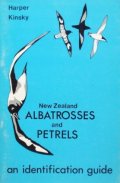
|
|
The Albatross of Midway Island: A Natural History of the Laysan AlbatrossMildred L Fisher
Southern Illinois University Press
1970
|
Buy from amazon.co.uk 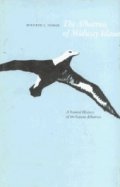
|
|
The Wandering AlbatrossWilliam Jameson
Doubleday
Revised edition
1961
|
Buy from amazon.co.uk 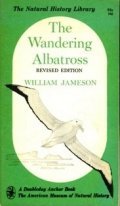
|
|
The Wandering AlbatrossWilliam Jameson
Rupert Hart-Davis
1958
|
Buy from amazon.co.uk 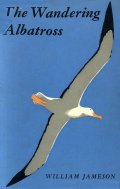
|
|
Catalogue Of The Gaviae And Tubinares In The Collection Of The British MuseumCatalogue Of The Birds In The British Museum, Volume XXV
Gaviae (Terns, Gulls and Skuas): Howard Saunders
Tubinares (Petrels and Albatrosses): Osbert Salvin
8 colour plates: J. Smit
Printed By Order Of The Trustees
Sold by: Longman & Co.; B. Quaritch; Kegan Paul, Trench, Trubner & Co.; and at the British Museum (Natural History)
1896
Preface: "It has been a fortunate circumstance that for the preparation of the present Volume the cooperation of Mr. H. Saunders and Mr. 0. Salvin could be secured, who for many years past have made the Birds of the families of Gulls and Petrels the special subject of their respective studies. As also the collections formed by these gentlemen have been incorporated with the series in the British Museum, the latter possesses of both these groups a collection unrivalled as to its intrinsic value, if not also as to the number of species and specimens. According to the lists given, this Collection consists now of Gaviae 115 and Tubinares 109. Among the Tubinares only, some of the species (15) are not represented in the Collection. Beside the many friends and correspondents who have rendered material assistance in the preparation of this Volume by the loan or gift of specimens, and who "will be enumerated in the introductory remarks of the Authors, I have to refer specially to the authorities of the United States National Museum and to the Hon. W. Rothschild, of whom the former sent important types for comparison, whilst the latter placed the whole of his rich collection at the disposal of Ihe Authors. I have acceded with pleasure to the request of the Director of the Museum to see through the press this and the two remaining Volumes for which the arrangements were made during my term of office. Finally, this would seem to be an appropriate place to pay a tribute to the memory of Henry Seebohm, by whose death, on November 26th, Ornithology has lost a most earnest and ardent student and the British Museum one of its most generous friends and benefactors. For the past fifteen years he took a deep interest in the growth and arrangement of the Collection of Birds in the British Museum, contributing, without stint, either from his own Collection or by special purchase, any specimens that were required to complete the Museum series or to aid in the preparation of the Catalogue. In the latter work he took an active part as the author of the Fifth Volume, which treated of the Warblers and Thrushes. After presenting his immense Collection of Eggs, and incorporating it with that of the Museum, he undertook and completed a Manuscript Catalogue of the whole. By his Will he conferred his last benefit on the Museum, bequeathing to the Trustees the entire Collection which at the time of his death was still in his possession."
|
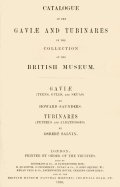
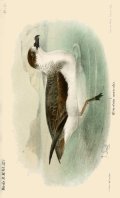
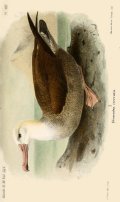 |
|